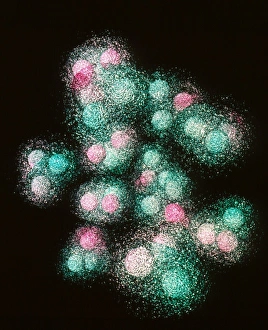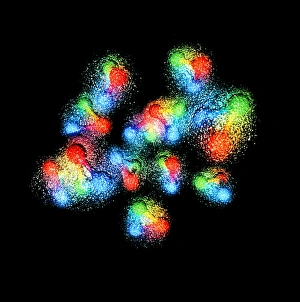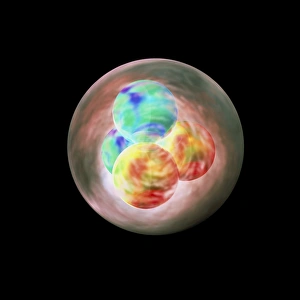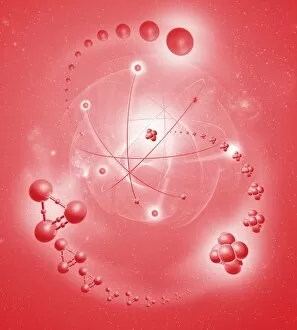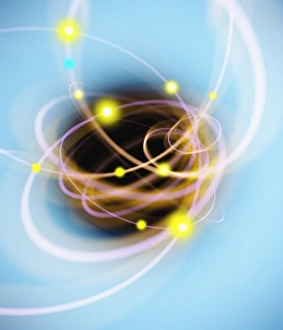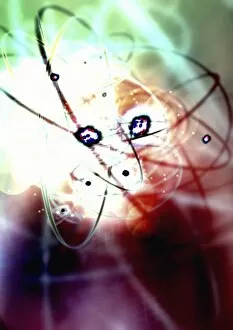Neutron Collection (page 3)
The neutron, a fundamental particle in atomic structure, plays a crucial role in various scientific phenomena
All Professionally Made to Order for Quick Shipping
The neutron, a fundamental particle in atomic structure, plays a crucial role in various scientific phenomena. In the vast expanse of space, the Crab Nebula captivates us with its beauty. A composite image reveals the intricate details of this celestial wonder, where they are born through stellar explosions. Nuclear fission artwork showcases the immense power and potential harnessed by splitting atoms. James Chadwick, a brilliant British physicist, discovered the neutron's existence in 1932 (C017 / 7111). His groundbreaking work revolutionized our understanding of atomic structure. Visualizations depicting quark structures provide insight into how neutrons contribute to matter's composition. Carbon's quarks dance together harmoniously while oxygen's atomic structure exhibits an elegant arrangement. In control rooms like those at Sizewell B Power Station, engineers monitor nuclear reactors powered by neutrons' controlled release of energy through nuclear fission. An illustration vividly portrays a neutron striking Uranium-235 nucleus, causing it to become unstable and split apart—releasing energy and additional neutrons. Atomic models showcase other elements influenced by neutrons' presence: beryllium displays its unique configuration while helium and boron reveal their distinctive arrangements as well. The relative atomic mass of boron-11 is illustrated with five protons accompanied by six essential neutrons within its nucleus. From cosmic wonders to microscopic realms within atoms, the neutron remains an indispensable piece in unraveling nature's mysteries. Its significance spans from powering our world to shaping our understanding of matter itself—a testament to both its simplicity and complexity simultaneously.


